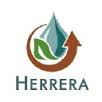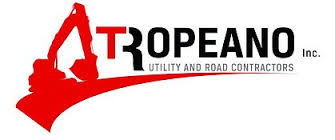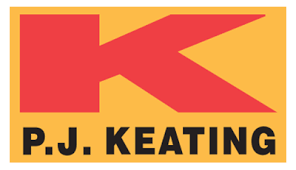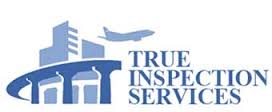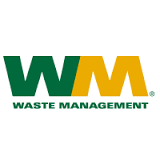News
 EPA Releases New Memo Outlining Strategy to Equitably Deliver Clean Water Through President Biden’s Bipartisan Infrastructure Law
EPA Releases New Memo Outlining Strategy to Equitably Deliver Clean Water Through President Biden’s Bipartisan Infrastructure Law
Mar 08, 2022
LENEXA, KAN. – Today the U.S. Environmental Protection Agency (EPA) issued a memorandum to guide collaborative implementation with state, local, and Tribal partners of $43 billion in water infrastructure funding through the Bipartisan Infrastructure Law. President Biden, with bipartisan support from congress, is providing the single largest investment in water the federal government has ever made. EPA’s memo is a key implementation step that outlines requirements and recommendations for the Drinking Water and Clean Water State Revolving Funds (SRFs) to ensure the country is working together to deliver clean and safe water and replace lead pipes for all Americans, especially disadvantaged communities.
“The Bipartisan Infrastructure Law’s investment in clean water is nothing short of transformational,” said EPA Assistant Administrator for Water Radhika Fox. “EPA and its state, local, and Tribal partners have an obligation to work together and maximize the impact of these funds in communities, especially disadvantaged communities. Water is essential, and this action will help ensure that every American can rely on safe drinking water and have access to wastewater management that protects health and the environment.”
“Today’s action by the EPA is a great example of how the bipartisan Infrastructure Investment and Jobs Act will make a real difference in people’s lives by investing federal funds to create good-paying jobs and protect safe drinking water for our children and working families,” said Michigan Governor Gretchen Whitmer. “Recently, I signed an executive directive readying Michigan to use the incoming resources as effectively as possible, and I am proud to see that our federal partners are also prioritizing investments in underserved communities. I look forward to working with the EPA, the Michigan legislature, and anyone who wants to partner with us to replace lead service lines statewide and ensure every parent can give their kid a glass of water with confidence knowing that it is safe.”
“Everyone in Oregon deserves access to clean drinking water, regardless of their income level or the zip code they live in,” said Oregon Governor Kate Brown. “I’m very excited to see Administrator Regan and EPA taking this next step to distribute water infrastructure funding to the communities that need it most, with a shared vision that centers equity as we work to deliver clean and safe drinking water to all Americans.”
“The Environmental Council of the States appreciates EPA's engagement with the states in preparing their SRF Implementation Memo and looks forward to working closely with EPA and others to ensure these critical funds are delivered quickly and efficiently through flexible and targeted policies to help provide clean and safe water for all,” said Maryland Department of Environment Secretary and Environmental Council of the States President Ben Grumbles.
“The SRF implementation memo is the first step in distributing Bipartisan Infrastructure money to states and we appreciate EPA’s engagement with the States throughout the memo development,” said Jim McGoff, Indiana Finance Authority COO and Director of Environmental Programs and Council of Infrastructure Financing Authorities President. We look forward to providing this money to communities throughout the nation to improve our water and wastewater infrastructure.”
“The Rural Community Assistance Partnership commends the U.S. Environmental Protection Agency for taking an important first step of releasing timely guidance to state and local partners on how over $55 billion in water investments through the Bipartisan Infrastructure Law will be implemented,” said Rural Community Assistance Partnership (RCAP) Interim CEO Keith Ashby. “RCAP stands ready to work with EPA, states, and non-governmental partners to ensure that small and rural disadvantaged communities have equitable access to these historic investments in our nation’s water infrastructure.”
The majority of water infrastructure funding through the Bipartisan Infrastructure Law—$43 billion—will flow through the Clean Water and Drinking Water State Revolving Funds (SRFs). EPA’s implementation memo provides information and guidelines on how EPA will award and administer supplemental SRF Capitalization Grants through the law, including for the general drinking water and clean water SRF programs and funding that will be dedicated to removing lead service lines and addressing perfluoroalkyl and polyfluoroalkyl substances (PFAS) and other emerging contaminants.
EPA’s implementation memo highlights the flexibility provided to states and borrowers to address a wide variety of local water quality and public health challenges. SRF funding through the Law can be used in combination with additional funding sources to finance water infrastructure projects that meet the most pressing local needs. The memo also underscores provisions included in the Bipartisan Infrastructure Law to ensure that disadvantaged communities fully benefit from these historic investments in the water sector. Additionally, the memo specifies strategies for making rapid progress on lead service line replacement and addressing PFAS and other emerging contaminants.
EPA will be working with state co-regulators, Tribal partners, and stakeholders on next steps. The agency will provide training and technical assistance to support the development of intended use plans that identify priority projects for SRF funding. EPA intends to review these plans aligned with the requirements and recommendations of the implementation memo with the goal of expeditiously investing in communities across the country.
The memo issued today follows a letter from EPA Administrator Michael S. Regan to Governors in December of 2021, encouraging states and Tribes to maximize the impact of water funding from the law to address disproportionate environmental burdens in historically disadvantaged communities across the country.
Working collaboratively, the SRF programs and EPA can make progress towards Justice40, which aims to ensure that federal agencies deliver at least 40% of benefits from certain investments to disadvantaged communities.
EPA will host national webinars on March 10, 2022, and March 16, 2022. To register visit https://www.epa.gov/dwsrf/forms/bil-implementation-memorandum-webinar.
For the SRF implementation memorandum, visit: https://www.epa.gov/dwsrf/bipartisan-infrastructure-law-srf-implementation-memorandum.
For more information, visit: https://www.epa.gov/infrastructure.
What They’re Saying
For quotes from congressional members, labor leaders, community and environmental leaders, water associations, and more, please visit: https://www.epa.gov/newsreleases/epa-releases-new-memo-outlining-strategy-equitably-deliver-clean-water-through.
Background
President Biden signed the Bipartisan Infrastructure Law on Monday, November 15, 2021. This is a big and bold investment in our nation’s infrastructure, including a historic $60 billion investment in key programs and initiatives implemented by EPA to build safer, healthier, cleaner communities. This critical funding means that more Superfund sites will be cleaned up faster; blighted and polluted sites across America will be redeveloped to contribute to local economies once again; the nation’s school bus fleet will be made cleaner; and people will be put to work revitalizing aging water infrastructure in communities throughout the country.
In December 2021, EPA announced estimated SRF funding allotments to states, Tribes, and territories for 2022 through the Bipartisan Infrastructure Law. This funding, provided through EPA’s SRF programs, will create jobs while upgrading America’s aging water infrastructure and addressing key challenges like lead in drinking water and PFAS contamination. For decades, the SRFs have been the foundation of water infrastructure investments, providing low-cost financing for local projects across America. EPA, states, Tribes, and territories have successfully worked together to invest more than $200 billion in SRF funds since 1988.
U.S. Environmental Protection Agency, Region 7 - 11201 Renner Blvd., Lenexa, KS 66219
Iowa, Kansas, Missouri, Nebraska, and Nine Tribal Nations
Contact Information: EPA Press Office, [email protected]
# # #
Learn more about EPA Region 7: www.epa.gov/aboutepa/epa-region-7-midwest
Connect with EPA Region 7 on Facebook: www.facebook.com/eparegion7
Follow us on Twitter: @EPARegion7
MS4 Requirements





